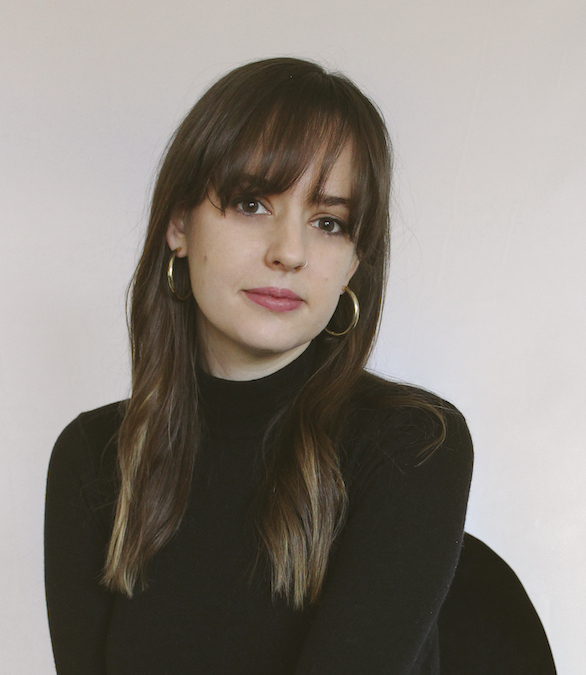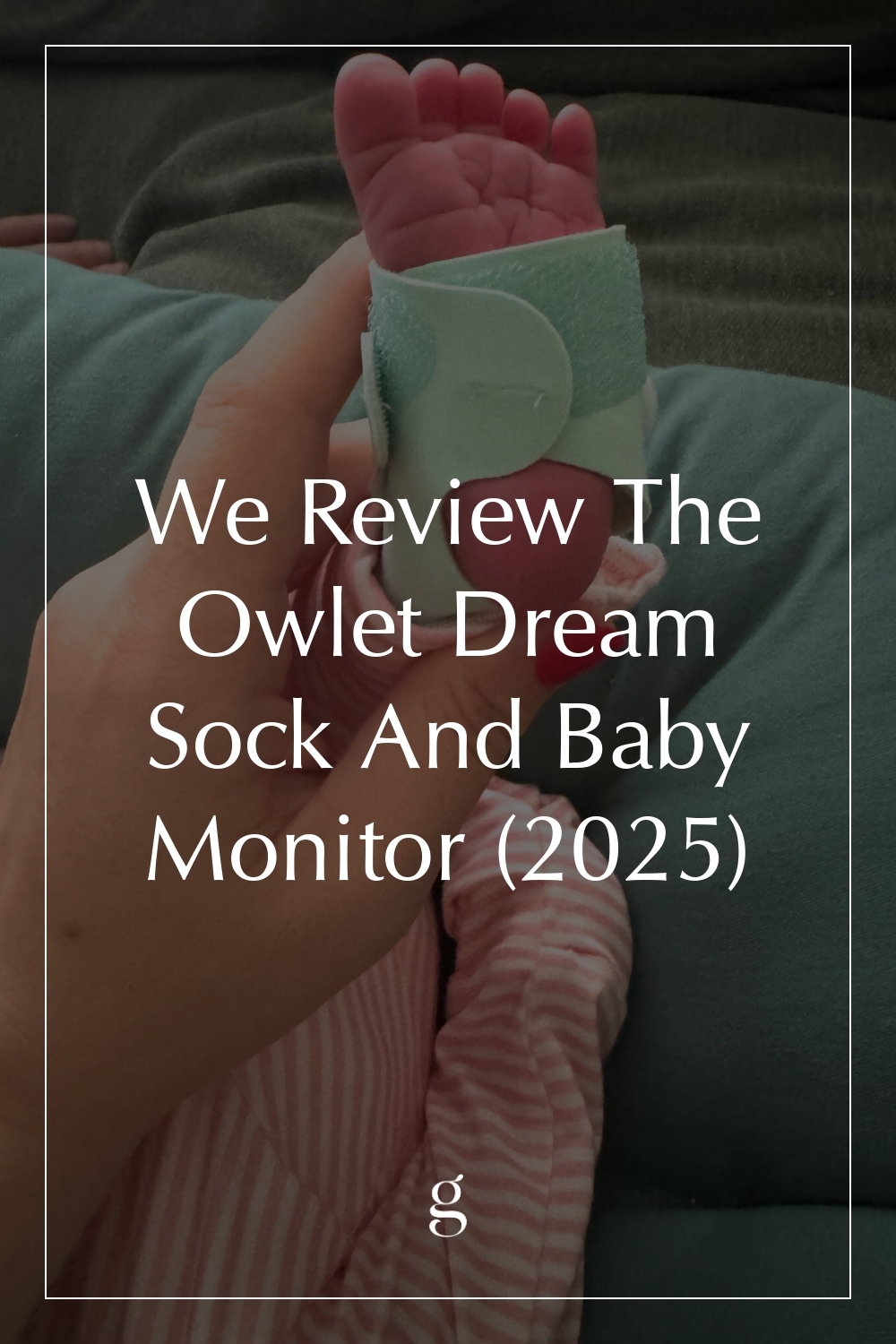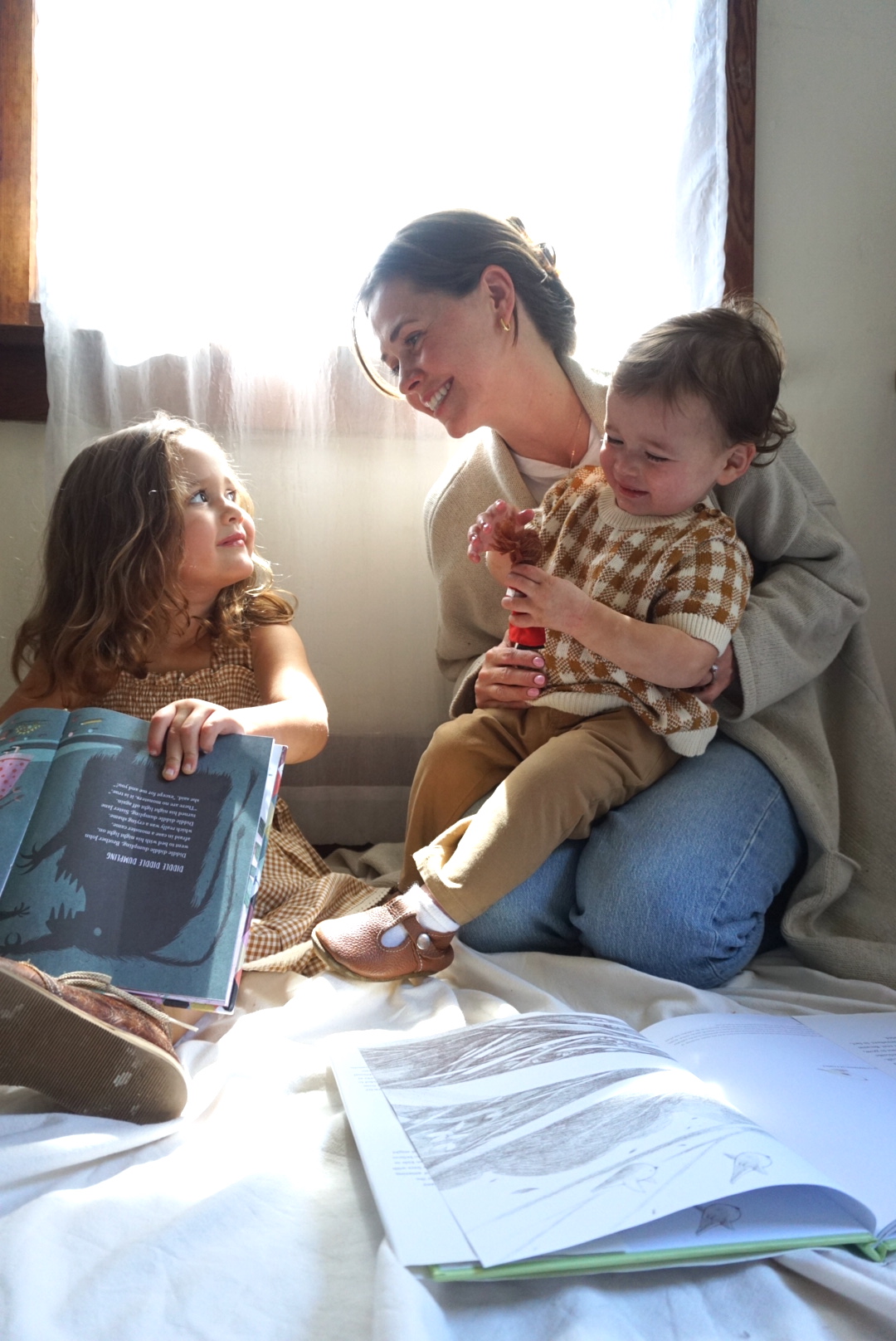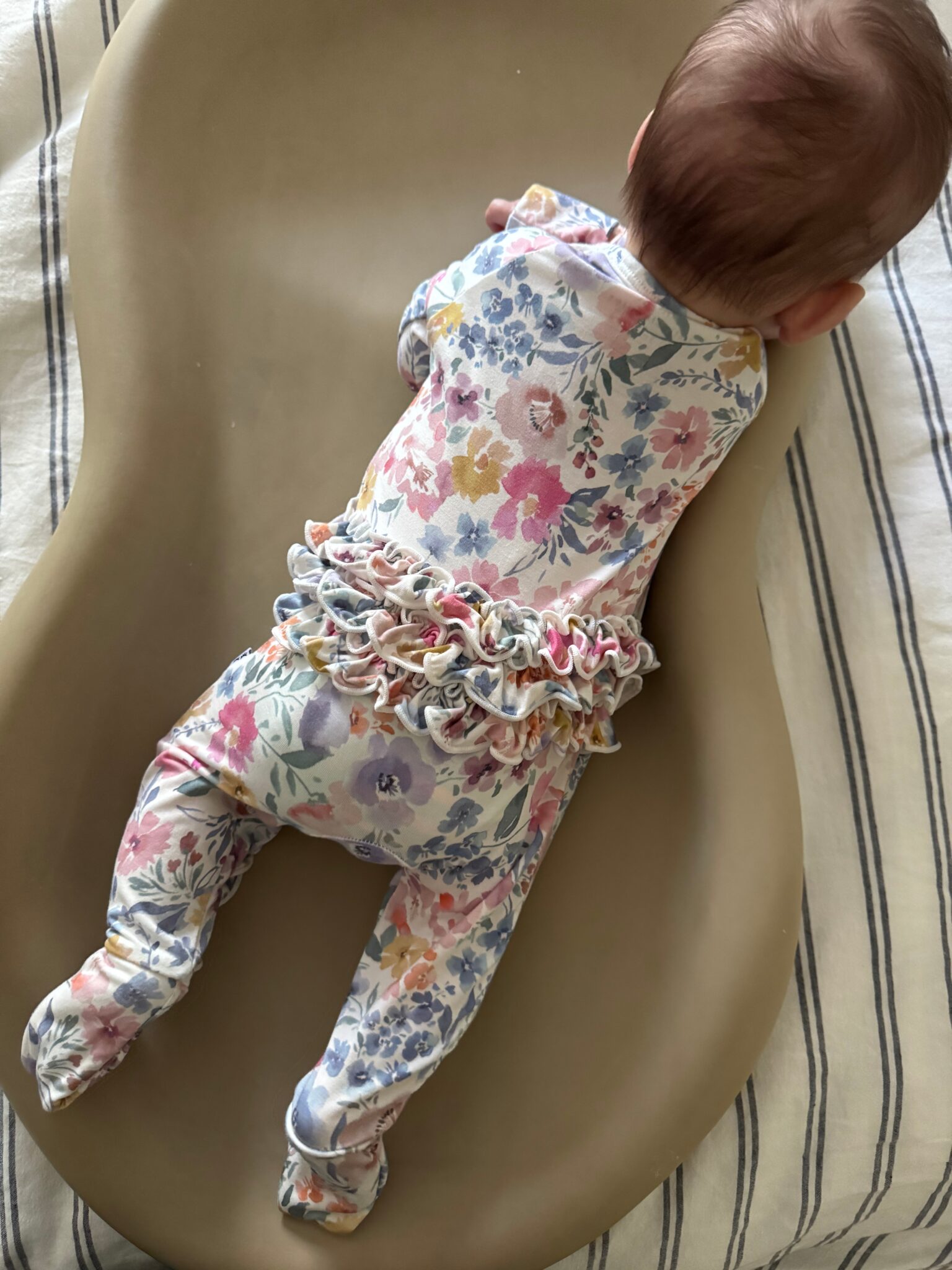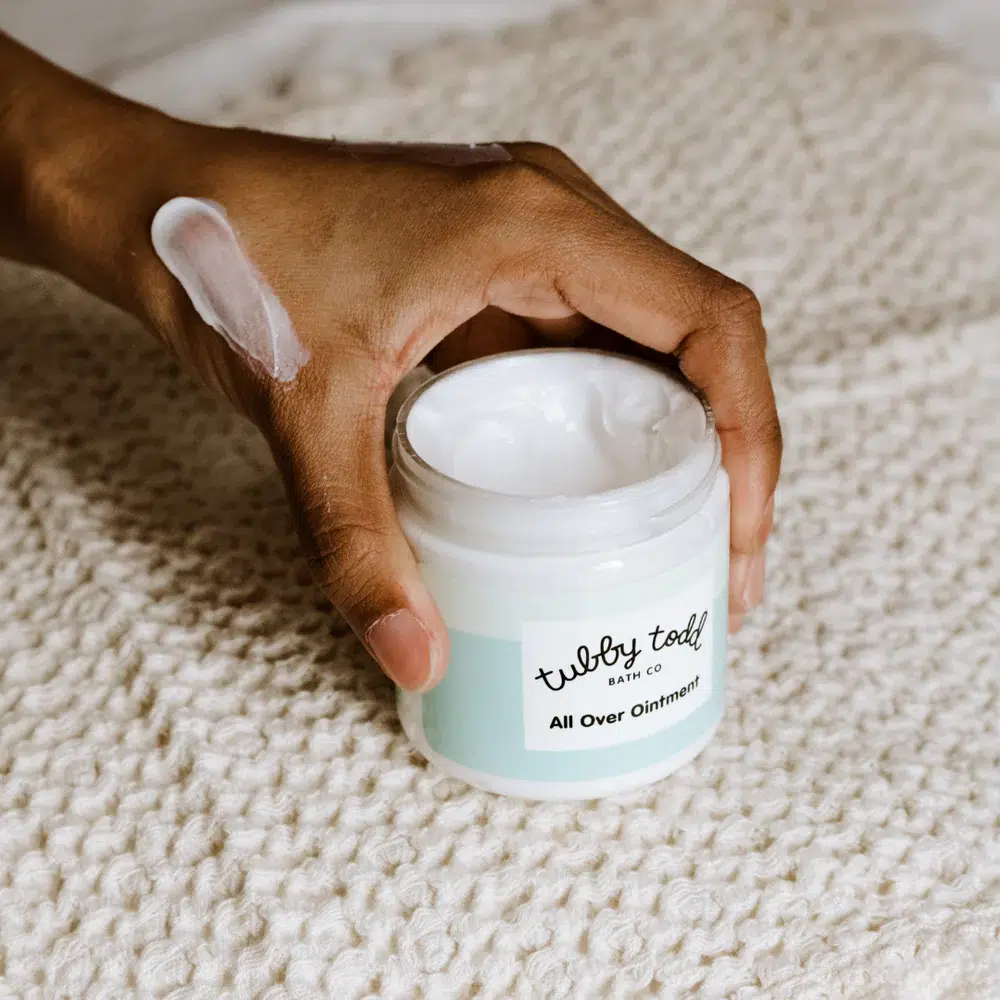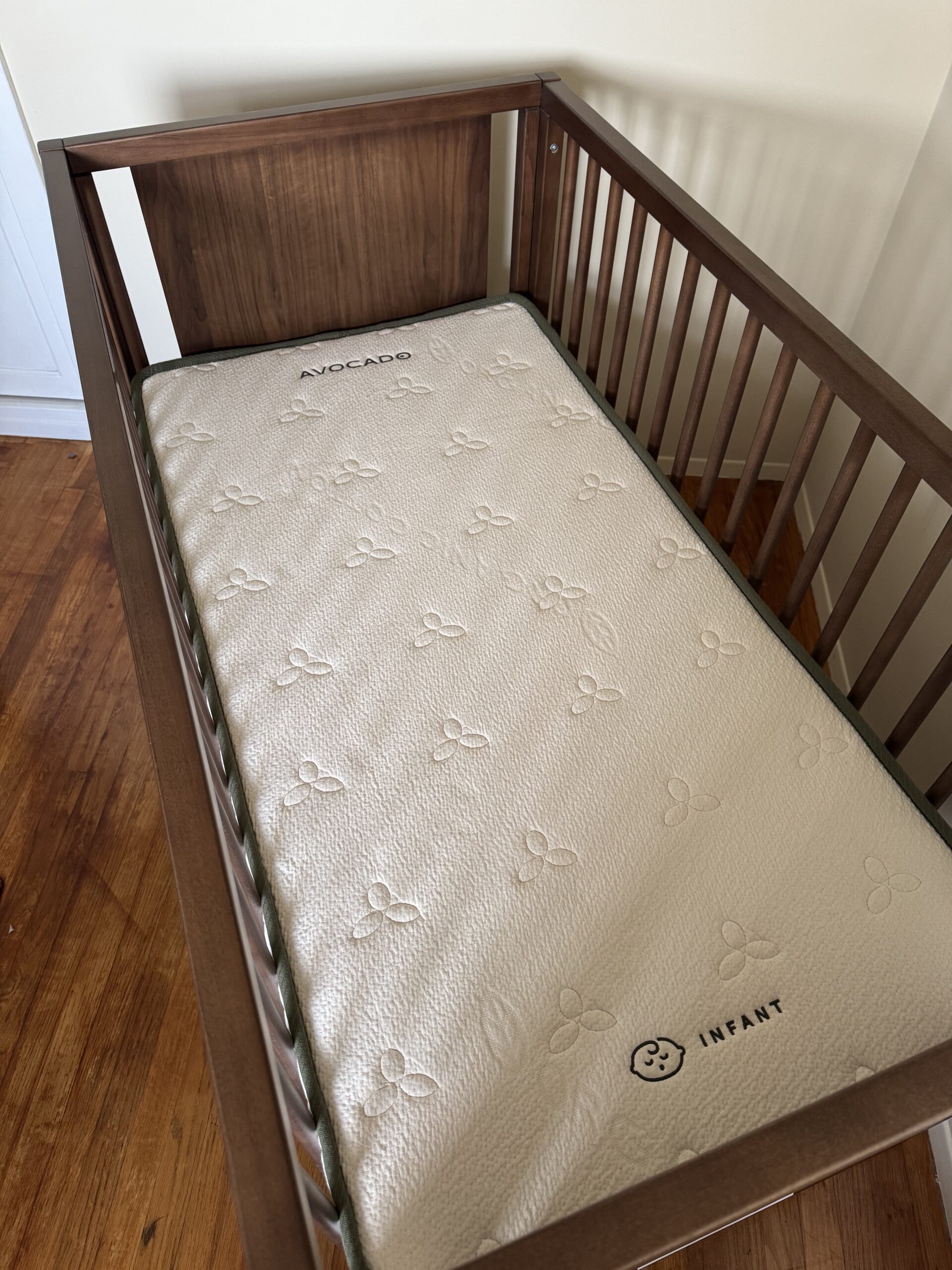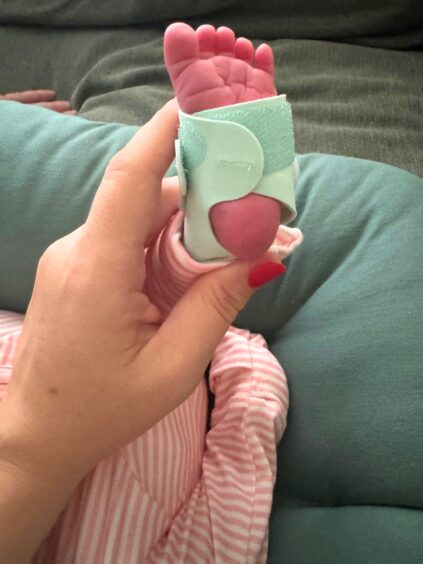
We Review The Owlet Dream Sock And Baby Monitor (2025)
Summary: I reviewed the Owlet Dream Sock and baby monitor, and while it didn’t completely alleviate my anxiety, it provided real-time insight into my baby’s sleep cycles and patterns.
What I love:
- I love that the Owlet Dream Sock provides real-time tracking of heart rate, oxygen levels, and sleep patterns, giving me peace of mind during naps and overnight.
- The Owlet Cam delivers clear, reliable video and audio, making it easy to check in on my baby from anywhere in the house.
- I appreciate that the Sock and camera don’t have to be used together — I can choose what works best for our family and adjust as our baby grows.
Things to keep in mind:
- The Sock can trigger occasional false alarms, which can be startling in the middle of the night.
- Full access to detailed analytics requires the Owlet360 subscription, adding a monthly cost on top of an already significant investment.
When my daughter was born this past summer, I spent the first week of her life hovering over her bassinet just to make sure she was still breathing. Sometimes I’d place a hand lightly on her belly or put my finger under her nostrils to see if I could feel breath. On one drive to my parents’ house when she was almost six weeks old, I realized I hadn’t heard any sounds from her car seat for a while and panicked. I pulled over just to check and make sure she was okay. (Spoiler: She was fine, and she wasn’t happy that I woke her.)
Most new parents know this dance: You finally get your baby to sleep, only to spend that “rest” time worrying about them. I’ve lost track of the nights spent watching the monitor, holding my breath at the slightest flicker of movement, exhaling, closing my eyes and then waking five minutes later to start the cycle all over again.
“Most new parents know this dance: You finally get your baby to sleep, only to spend that ‘rest’ time worrying about them.”
While baby monitors allow you to see and hear your baby, they don’t tell you much about how your baby is sleeping. And for anxious parents like myself, it can be reassuring to know everything is fine so that we, too, can get some rest.
That’s what drew me to Owlet — the first of its kind, FDA-cleared smart baby monitor. This summer, I tested both the Owlet Cam and the Dream Sock with my newborn daughter. Here’s my honest take: What worked, what felt stressful, and whether I’d recommend it to other new parents.
About Owlet
Owlet is a baby monitor brand that was founded by parents who asked a simple yet powerful question: How can we give families the same peace of mind that hospitals provide, but at home? Their answer wasn’t another static audio feed or grainy video monitor. Instead, they completely reimagined baby monitoring, creating tools that quietly track a baby’s well-being in real time so that parents can rest a little easier.
“They completely reimagined baby monitoring, creating tools that quietly track a baby’s well-being in real time so that parents can rest a little easier.”
The brand’s lineup includes a few key players: The Dream Sock (a soft, wearable device that wraps around your baby’s foot), the Owlet Cam (a sleek HD video monitor), and accessories such as wall mounts, travel cases, and a premium app that makes tracking everything feel effortless.
The Dream Sock is the real standout. It’s the first device of its kind to earn FDA clearance, meaning it meets strict standards for accuracy in tracking your baby’s heart rate and oxygen levels. Paired with sleep trend data, it provides a window into your baby’s wellbeing, offering parents clarity and valuable information, rather than just another stream of notifications.
What really sets Owlet apart, though, is its commitment to medical-grade monitoring. The Dream Sock utilizes pulse oximetry (the same technology used in hospitals) to monitor pulse and oxygen levels, and sends gentle alerts if readings fall outside preset safe zones. It has also been clinically validated for accuracy across all skin tones, in both motion and stillness — a thoughtful detail that matters.
“What really sets Owlet apart, though, is its commitment to medical-grade monitoring.”
Of course, Owlet is clear that their devices aren’t meant to diagnose or treat medical conditions like SIDS or RSV. They’re tools for insight and peace of mind, not a replacement for medical care. I always recommend looping in your pediatrician if you have any health concerns. But as a parent, I know how reassuring it is to have that extra layer of information readily available.
Setting up the Owlet
Unboxing the Owlet is almost like unboxing a new Apple product — the packaging is sleek and modern, and even the instruction manual feels expensive. The setup itself is straightforward: Link the base station, download the Owlet Dream app, connect to Wi-Fi, and pair the sock (and/or camera). The setup flow was clean, and the app guided me through each step.
“The packaging is sleek and modern, and even the instruction manual feels expensive.”
Owlet includes a system to mount or attach the devices (e.g., for wall mounting) as part of their accessory offering. However, I chose to order a universal monitor clip (like this one) instead. That way, I could clip the camera to our bassinet and move it around more flexibly. Being able to reposition it from bassinet to pack n’ play for travel situations has been a big plus for us.
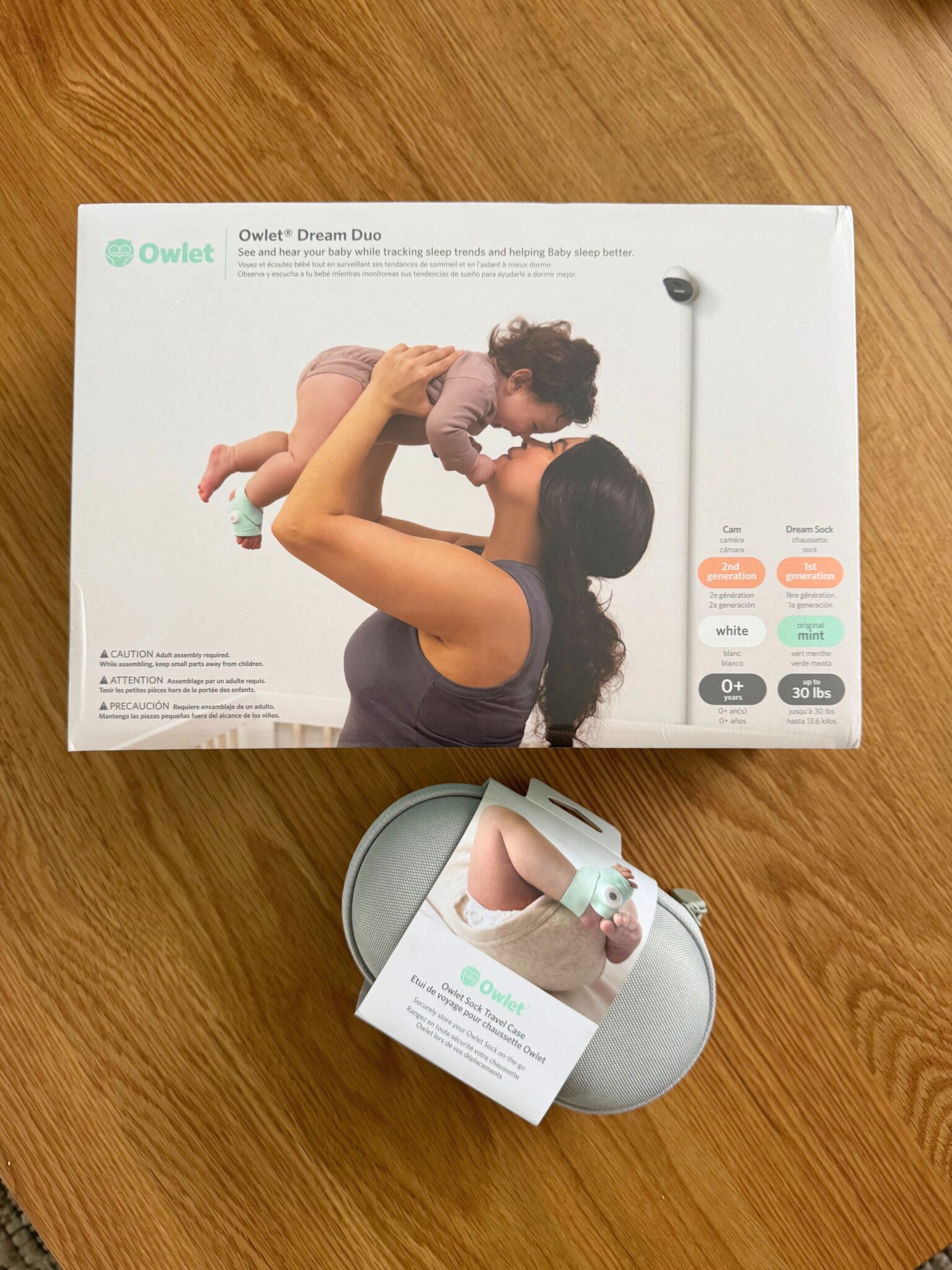
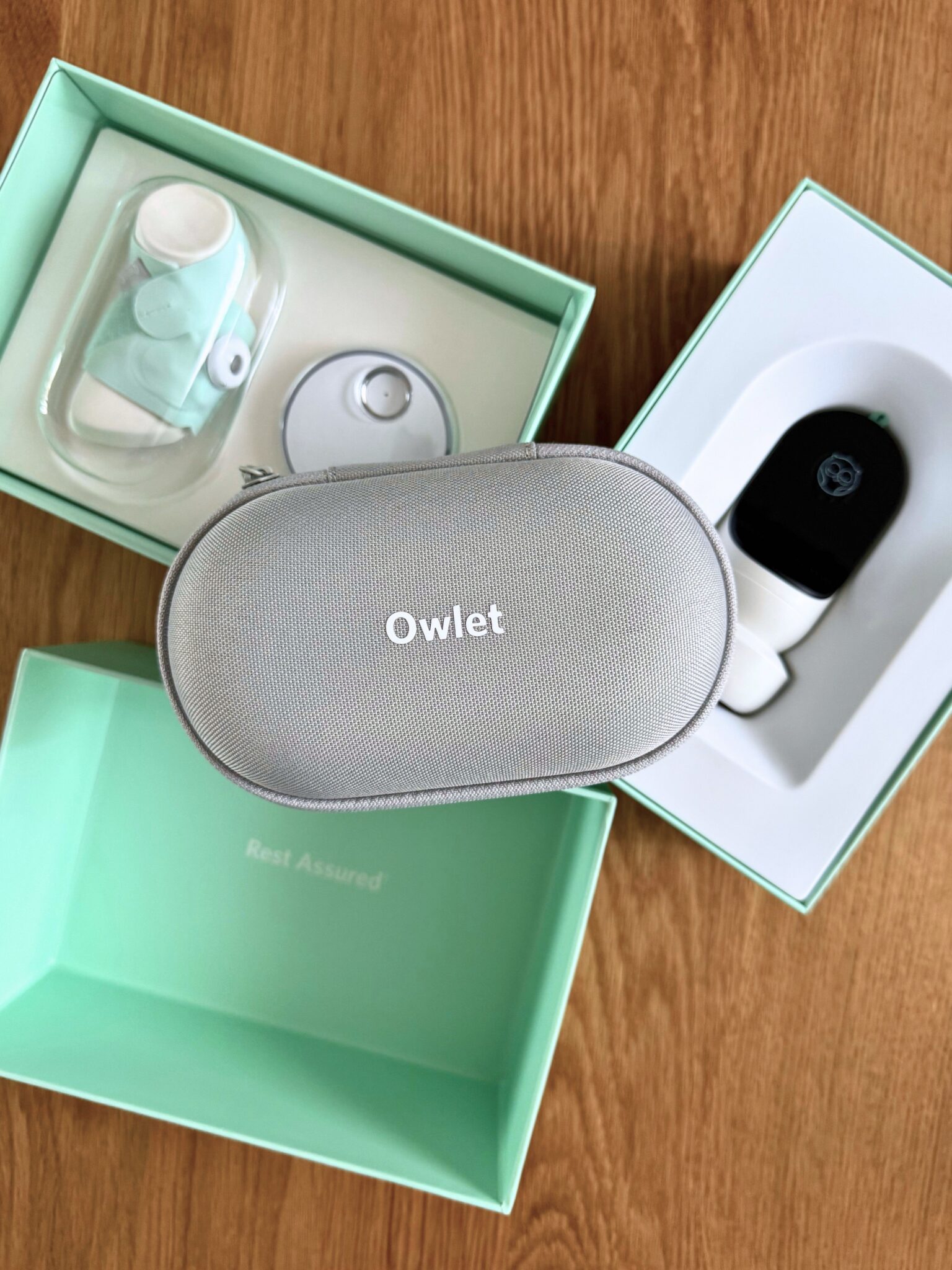
What does the Dream Sock track?
The Owlet Dream Sock goes beyond basic monitoring — it tracks your baby’s heart rate, blood oxygen levels, and sleep patterns in real time, including when they are in deep sleep versus light sleep. Made from soft, hypoallergenic cotton, the fabric sock gently wraps around your baby’s foot, ensuring comfort throughout the night. Designed with a universal fit, it can be alternated between both feet to give each foot a periodic rest, which is recommended every 2-3 days. (It includes three different-sized socks to grow with your baby.)
“It tracks your baby’s heart rate, blood oxygen levels, and sleep patterns in real time, including when they are in deep sleep versus light sleep.”
All the data flows directly to the Owlet app, where you can view trends over time and even compare your baby’s sleep and vital statistics to those of other babies their age. If anything falls outside the preset “safe zones,” the app sends an alert to your phone, and the sock base emits a notification. This combination of real-time tracking and thoughtful design is meant to offer peace of mind and help parents stay connected to their baby’s well-being without disrupting their sleep.
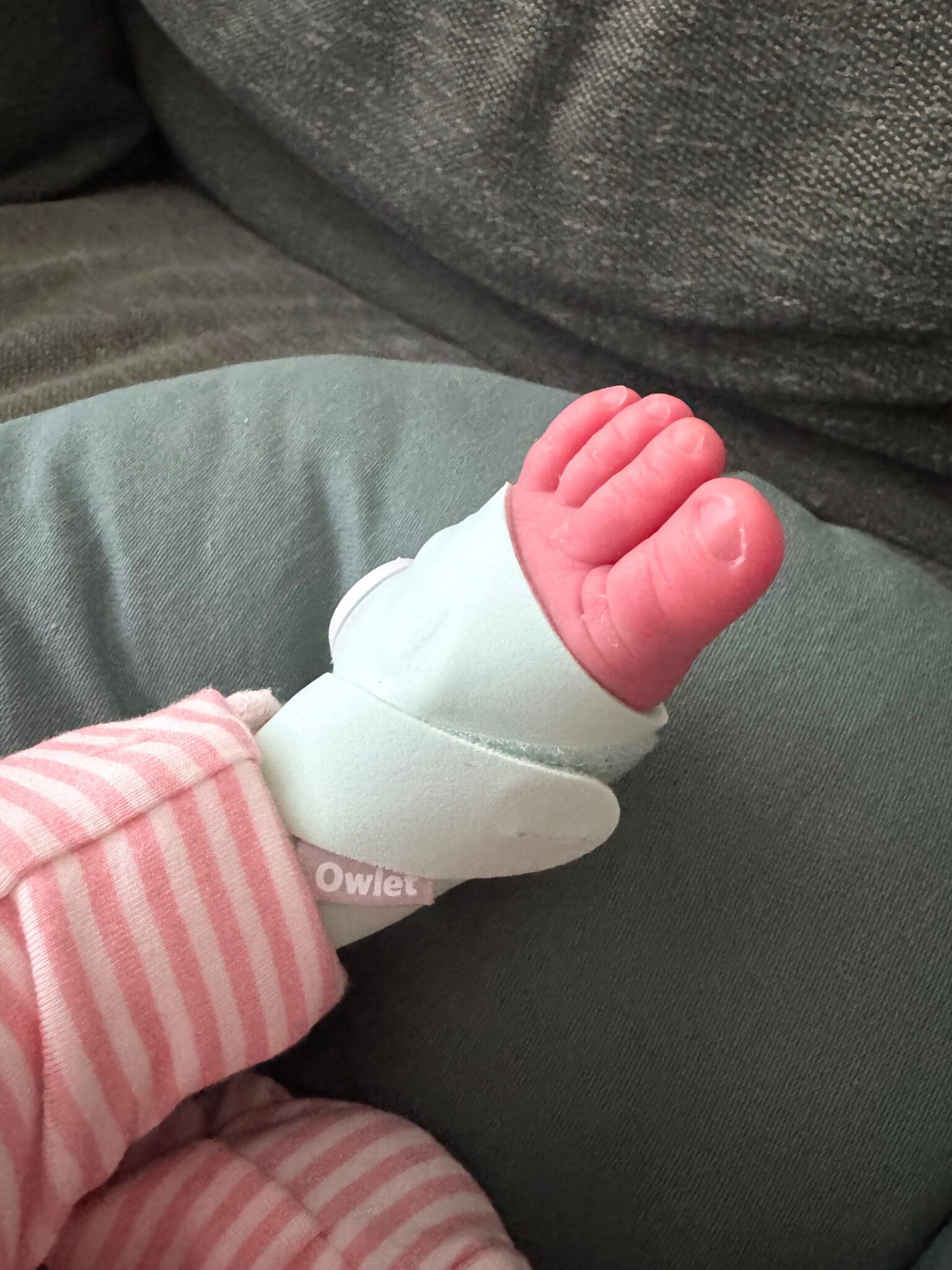
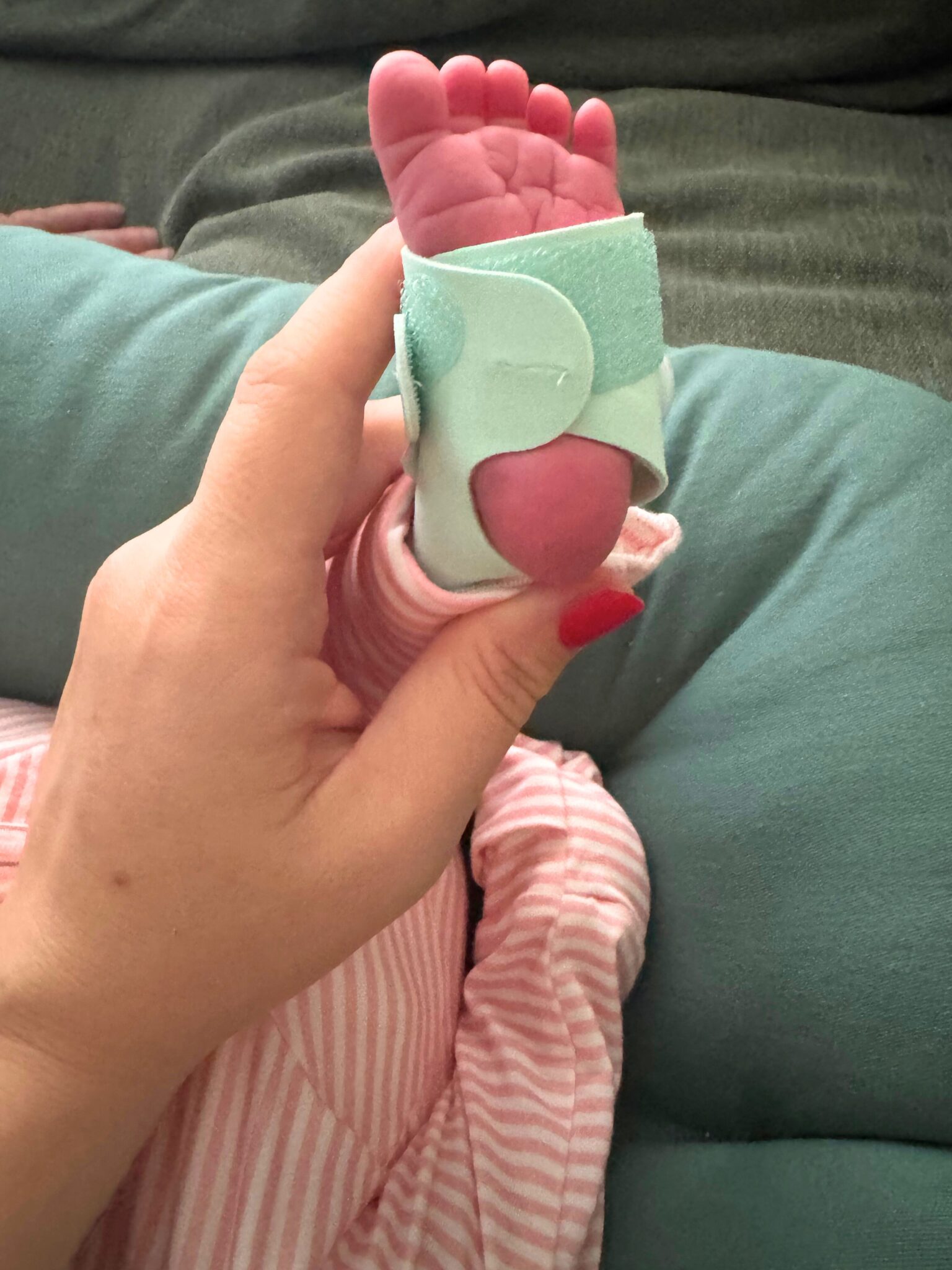
First impressions
I was immediately struck by how sharp and clear the video quality was when streaming the Owlet video monitor to my phone. The image had good resolution and detail, even in the dark. The Dream Sock fit comfortably under my daughter’s onesies and was simple to put on. It didn’t feel bulky, or at least, she never squirmed as if it bothered her. First impressions: This isn’t a cheap baby monitor; a lot of thought and detail went into designing the camera, app, and sock.
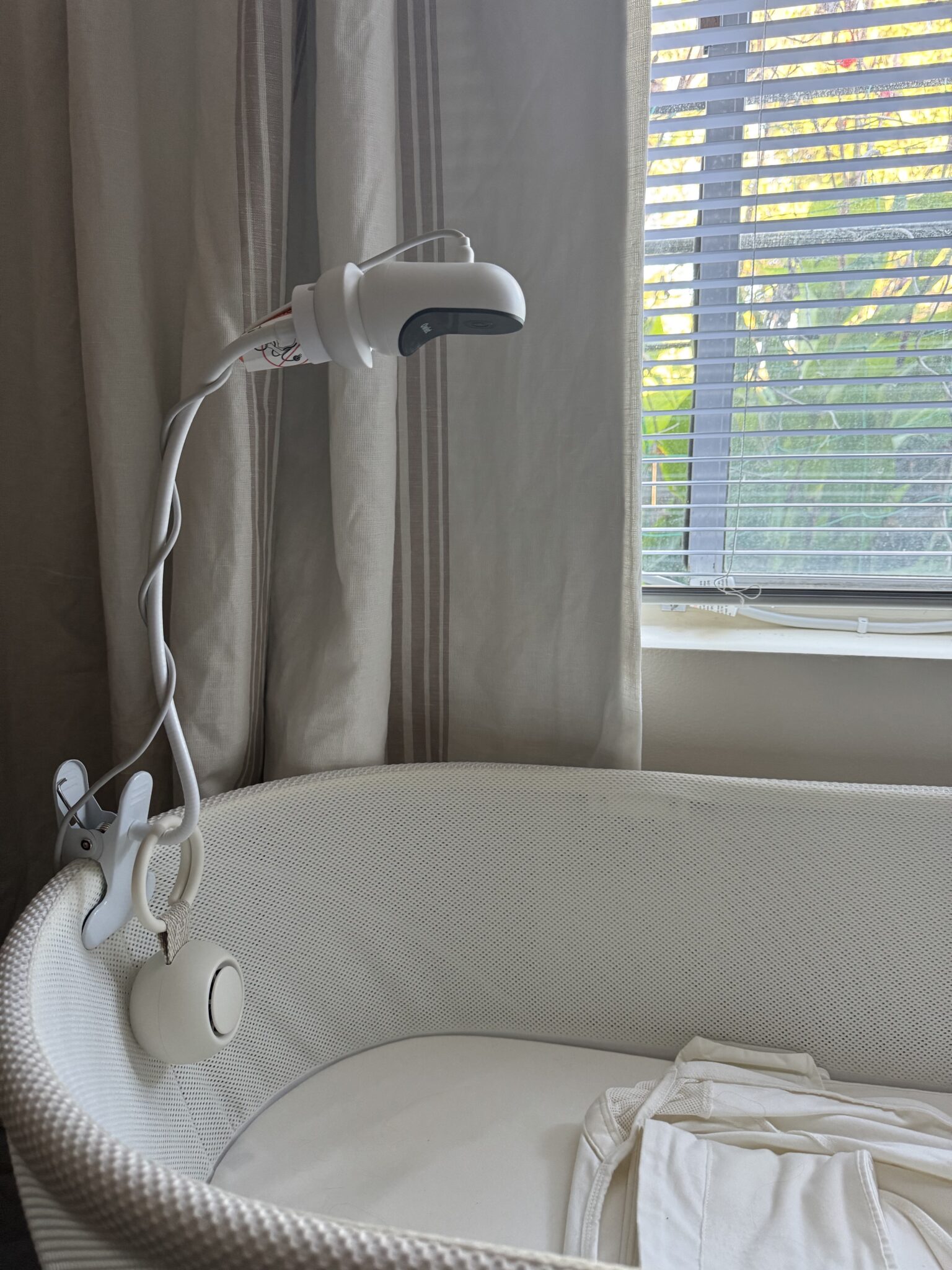
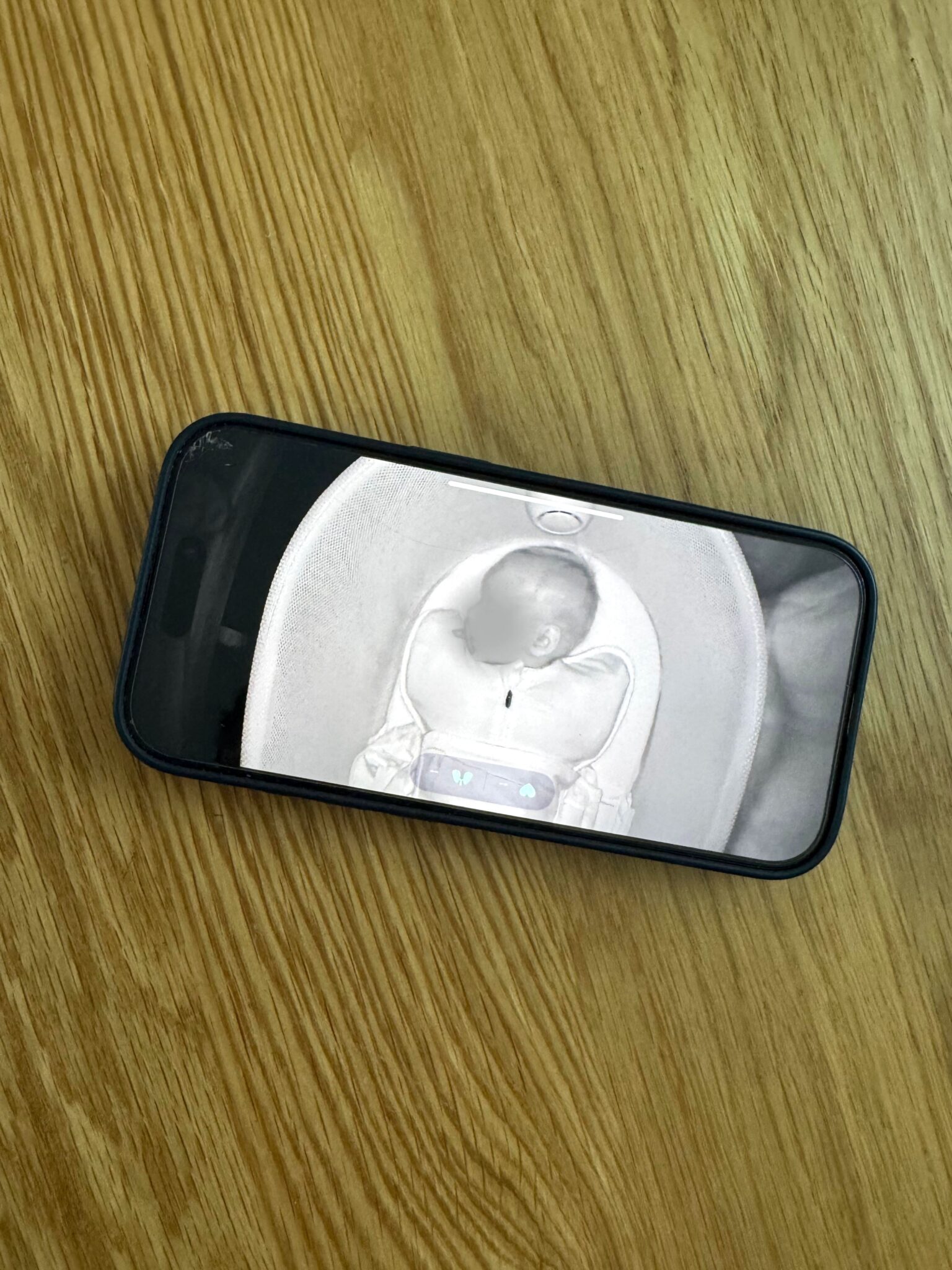
That said, I did run into a few quirks. Sometimes, during late-night feeding sessions, the sensors would trip because of how I was holding her (angle, movement, etc.). On a couple of occasions, the Sock would alarm because she “held her breath” momentarily while farting. Yes, you read that right. These false alarms woke the base station and sent alerts to our phones in the middle of the night because our daughter didn’t know how to release gas without holding her breath.
When it worked smoothly, though, the system provided features I loved: Live readings of pulse and oxygen, alerts when a reading dropped, and a history of sleep trends (including light sleep, deep sleep, and awakenings). It’s been fascinating to see the patterns over time and how my daughter cycles between sleep states. It gave me a better sense (beyond just hearsay) of how rested she actually is.
“It’s been fascinating to see the patterns over time and how my daughter cycles between sleep states.”
Using the Owlet system, I quickly realized how much real-time monitoring can offer peace of mind—though, like any tool, it comes with a little learning curve. Sometimes the app takes a moment to load, even on newer phones, which can be a test of patience when your baby is fussing and you just want a quick peek.
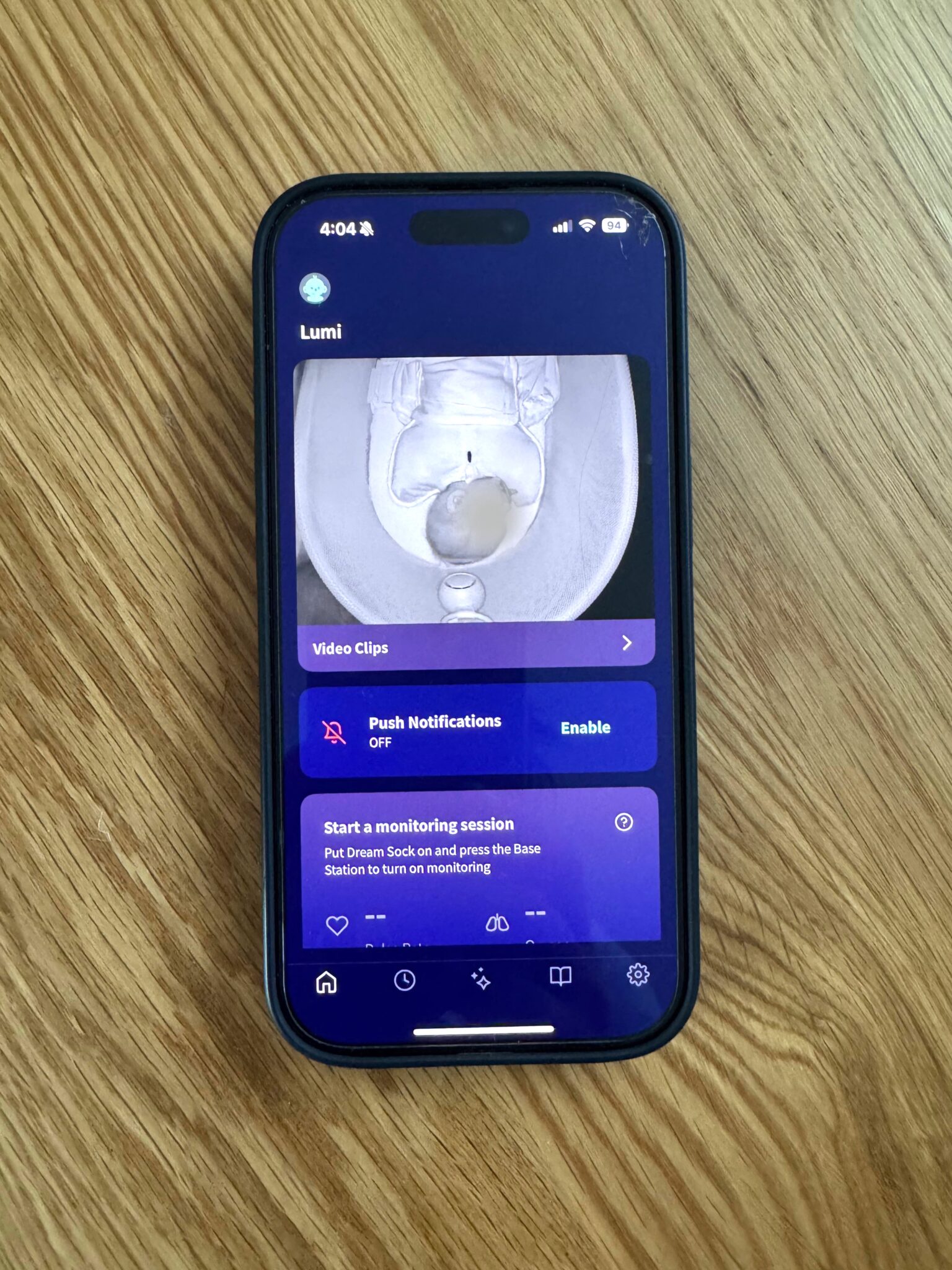
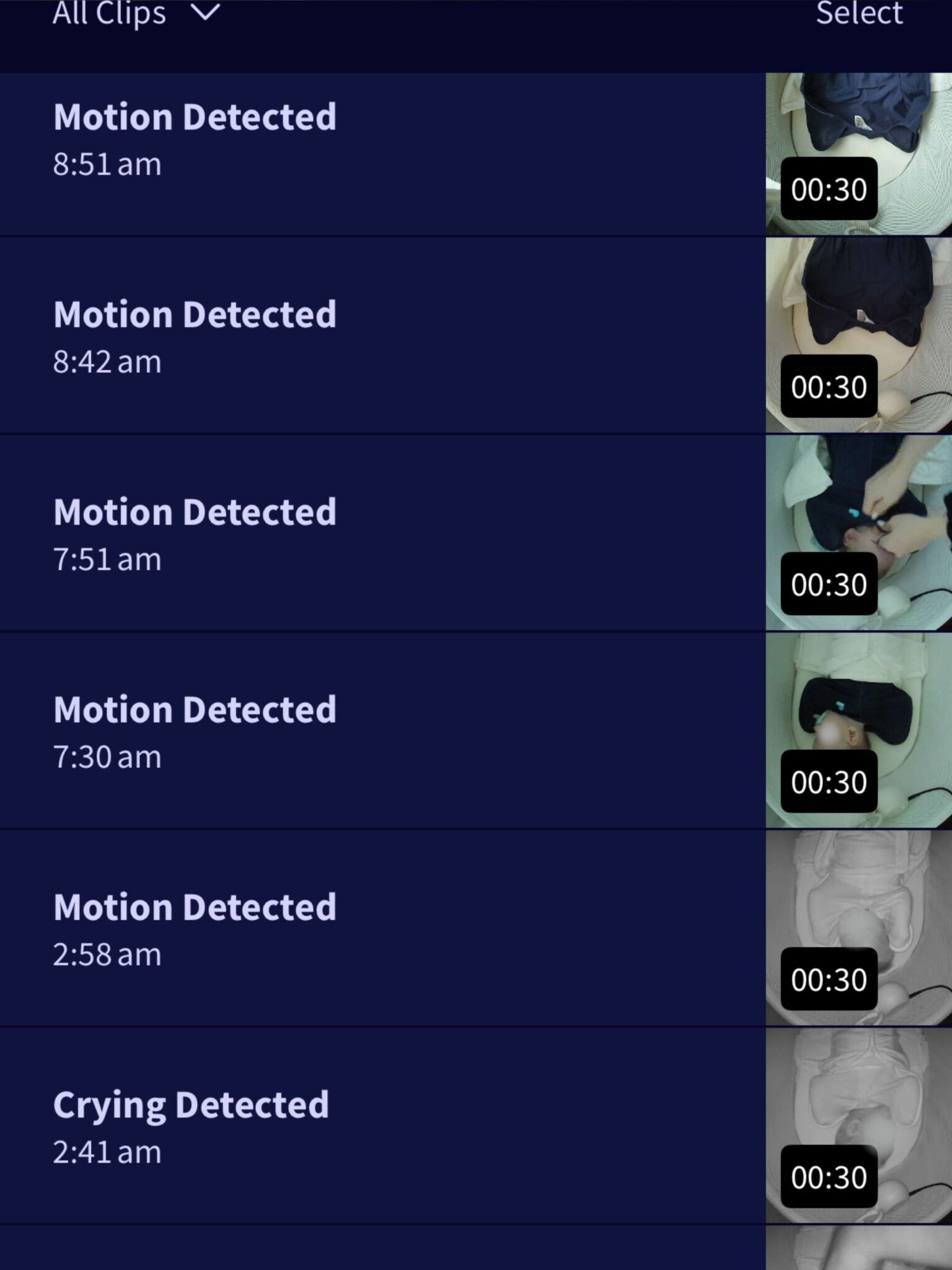
The Dream Sock itself is an impressive piece of technology. The alerts are precise, though very loud. After a few nights, you start to understand which notifications require immediate attention and which are simply part of normal fluctuations.
While the Owlet app is free to use, a membership for Owlet360 is required, which unlocks additional insights, including historical sleep trends and more detailed analytics. I don’t love that you need to pay a monthly subscription fee ($10/month with a 7-day trial) after the already steep cost of the monitor and sock at $349 (Though you can pay in installments, and Owlet is FSA/HSA eligible.)
Conclusion & final thoughts
Overall, the Owlet system is a thoughtful investment for parents who appreciate modern tech, clear visuals, and real-time sleep data. I love that the camera is reliable and provides crisp video (and audio). The Dream Sock is a fascinating tool, offering insights into pulse, oxygen, and sleep patterns. That said, it’s not without its quirks. The occasional false alarm, some app lag, and the subscription model are worth considering.
Privacy is another consideration. Owlet’s site details robust encryption protocols, including 256-bit encryption and elliptic curve authentication for data transmission, which is reassuring. Still, with any connected device, there’s always some level of risk, and more tech doesn’t automatically mean more security, especially when it comes to our children.
“Would I recommend the Owlet to new parents? Yes, but only if you’ll find genuine peace of mind from the features and are prepared for occasional alerts or subscription layers.”
Would I recommend the Owlet to new parents? Yes, but only if you’ll find genuine peace of mind from the features and are prepared for occasional alerts or subscription layers. No monitor can erase worry, and sometimes simpler systems, or even less data, can feel more humane and restful.
One of the system’s small but meaningful perks is that the sock and camera don’t need to be used together — you can use whichever suits your needs. Now that our baby is three months old, we’ve decided to stop using the sock every night simply because the oxygen readings and occasional alert were causing me more anxiety than necessary. The camera, however, remains a nightly and nap-time staple, giving us a consistent sense of connection and reassurance.
Kayti Christian is a Senior Content Strategist at The Good Trade. With an MFA in Nonfiction Creative Writing, her work has appeared in TODAY, Shondaland, and The New York Times. Since 2017, Kayti has been uncovering and reviewing the best sustainable home brands and wellness products. Her personal journey through four years of fertility treatments has inspired her to write extensively about women’s healthcare and reproductive access. Beyond her work at The Good Trade, Kayti is the creator of Feelings Not Aside, a Substack newsletter with 6,000 subscribers, and the cohost of the FriedEggs Podcast, which delves into IVF and infertility.
